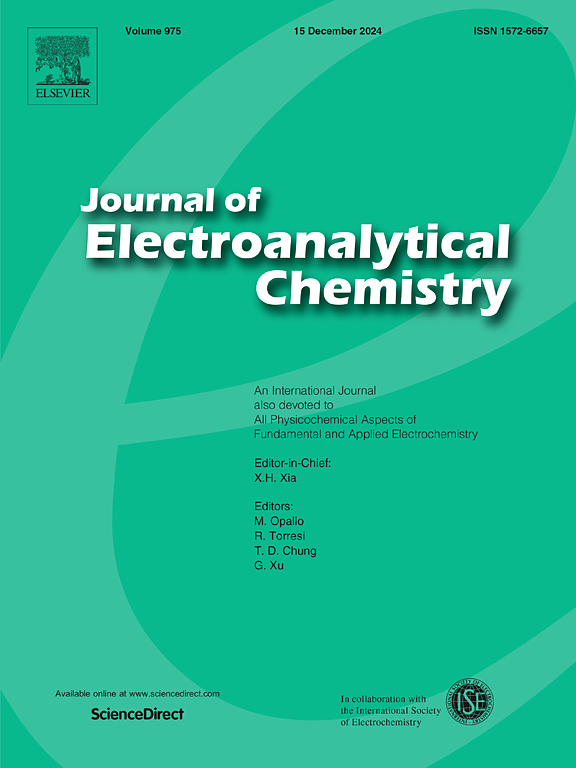Electrocatalytic oxidation of formaldehyde using pencil graphite electrode modified with layer-by-layer electrodeposition of carbon dots/polypectin/cobalt nanoparticles
IF 4.1
3区 化学
Q1 CHEMISTRY, ANALYTICAL
引用次数: 0
Abstract
The development of non-noble metal-based catalysts with high electrocatalytic activity and minimal poisoning for the oxidation of small organic molecules is of vital importance in the energy world. In the present work, carbon dots (CDs) and polypectin (PPC) were electrochemically synthesized and deposited on pencil graphite electrodes (PGE) to create unique multifunctional PPC/CD/PGE. Co nanoparticles (CoNPs) were subsequently electrodeposited on PPC/CDs, leading to the fabrication of CoNPs/PPC/CDs/PGE. The nanostructure nature of electrode modifier was characterized by various techniques. The electrocatalytic performance of CoNPs/PPC/CDs/PGE for the electrooxidation of formaldehyde in alkaline medium was investigated using different electrochemical methods. Based on the electrochemical results, the modified electrode showed excellent electrocatalytic activity for formaldehyde oxidation with minimum onset potential (−0.020 V/SCE) and high current density (35 mA cm−2) compared to other reported nanocatalysts based on noble (platinum group) and non-noble metals through an electrochemical-chemical (EC′) pathway. The electrochemical behavior of CoNPs/PPC/CDs/PGE in the presence of formaldehyde showed that the incorporation of CoNPs in the PPC/CD nanocomposite prepared on PGE significantly increases the electrocatalytic activity of the direct oxidation of formaldehyde, which can promise a new strategy in order to design cobalt-based high performance nanoelectrocatalysts for formaldehyde fuel cells.

求助全文
约1分钟内获得全文
求助全文
来源期刊
CiteScore
7.80
自引率
6.70%
发文量
912
审稿时长
2.4 months
期刊介绍:
The Journal of Electroanalytical Chemistry is the foremost international journal devoted to the interdisciplinary subject of electrochemistry in all its aspects, theoretical as well as applied.
Electrochemistry is a wide ranging area that is in a state of continuous evolution. Rather than compiling a long list of topics covered by the Journal, the editors would like to draw particular attention to the key issues of novelty, topicality and quality. Papers should present new and interesting electrochemical science in a way that is accessible to the reader. The presentation and discussion should be at a level that is consistent with the international status of the Journal. Reports describing the application of well-established techniques to problems that are essentially technical will not be accepted. Similarly, papers that report observations but fail to provide adequate interpretation will be rejected by the Editors. Papers dealing with technical electrochemistry should be submitted to other specialist journals unless the authors can show that their work provides substantially new insights into electrochemical processes.

 求助内容:
求助内容: 应助结果提醒方式:
应助结果提醒方式:


